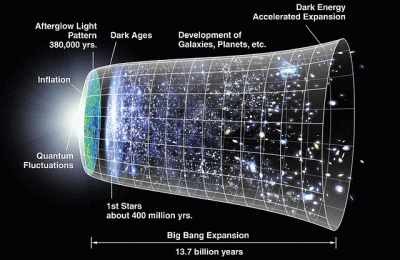
McMaster University’s Physics and Astronomy faculty consider the Standard Model of our cosmos to be on the verge of failure. Here is one item they point to:
New particles — muons, pions and a horde of other new particles — continued to be discovered, initially through studies of the cosmic rays that continuously bombard our atmosphere from space. This temporarily led to a much more complicated picture, whose underlying simplicity did not emerge until the 1960s when many of the particles known by that point were themselves found to be made up of still smaller constituents. What then emerged as elementary particles remain so now: six species of ‘quarks’ (up, down, strange, charm, bottom and top), and six species of ‘leptons’ (electron, muon, tau and three species of neutrinos).
The resulting list of particles is strangely redundant. Essentially all of everyday matter is made only of electrons and up and down quarks (of which the last two make up the proton and neutron), which, together with a neutrino, make up what is called the ‘first generation’ of elementary particles. Remarkably Nature seems to come to us with two more ‘generations’ of particles, whose properties directly copy this first generation (i.e. the charm and top quarks resemble the up quark; the strange and bottom quarks resemble the down quark; the muon and tau are copies of the electron; and so on).
Department Of Physics & Astronomy, “Particle Physics At The Crossroads” at McMaster University
Our physics color commentator, experimental physicist Rob Sheldon, who is also the author of Genesis: The Long Ascent, offers some thoughts, explaining why it is evidence of fine-tuning of the universe:
I looked over the McMaster website, and it is a pretty good summary of the state-of-the-art in particle physics. Not sure why they still have the Higgs boson as unconfirmed, but the Standard Model is portrayed well.
The 3 columns in the Fermion section of the table are being discussed in the paragraph you quoted. The up/down quark, the electron and electron_neutrino leptons make up some 99% of the matter in the universe. So why do we have the charm/strange quark, the muon/neutrino leptons (column 2) or the top/bottom quark and tau/neutrino leptons (column 3)?
By analogy to the appendix and the tonsils, or junk DNA, they don’t seem to be doing very much, so what is the significance of families 2 & 3? Why not families 4 & 5? Couldn’t creation have been easier on God if he just left out this redundant stuff?
![The Long Ascent: Genesis 1â 11 in Science & Myth, Volume 1 by [Sheldon, Robert]](https://images-na.ssl-images-amazon.com/images/I/51G-veeEcdL.jpg)
As George puts it, everything comes down to the theological argument “if I were God, I wouldn’t have done it this way.” The counter-argument is very simple, “just because we don’t know what it is doing doesn’t mean it is junk,” or more trenchantly, “it’s a good thing you aren’t God.”
As it turns out, the Big Bang Nucleosynthesis (BBN) model makes use of every bit of particle physics we know. The ratio of protons to neutrons in the very early universe determines the amount of each element that is created. That ratio depends on the strong interaction (quarks), the weak interaction (leptons), the temperature, the number of families (3), and all the different masses of each elementary subatomic particle. While you don’t hear this mentioned as often as the fine-tuning of the mass/expansion-rate ratio (which has to be accurate to 1:10^60), the number of fermion families is likewise fine-tuned. If columns 2 & 3 didn’t exist, the ratios in the BBN would be off, and the universe would look very different.
Given that particle physicists haven’t been able to explain dark matter or dark energy, they really haven’t devoted themselves to the fine-tuning of the 3 families of quarks and leptons. But it is my view, (one day realized I hope), that in the GeV era of ultra-hot-Big-Bang, the neutrinos carry a charge or a current, which converts this era into a plasma universe. It is this plasma that produces a huge magnetic field that decayed away in the first 3 billion years of the BB and today are seen as quasars, AGNs, and jets. The number of current-carrying species (families of quarks and leptons) determines how complex the plasma can be, and the complexity stores information. Therefore the huge gap in information between a butter-smooth hot Big Bang, and the cold, galaxy- and planet-rich universe we see today is explained by the information content of this GeV plasma.
So despite McMaster U. thinking this odd, and believing (hoping?) for a failure of the Standard Model, I see this as a necessary means of storing the information in the hot Big Bang and demonstrating the ultimate fine-tuning of the cosmos.
See also: What becomes of science when the evidence does not matter?
Follow UD News at Twitter!